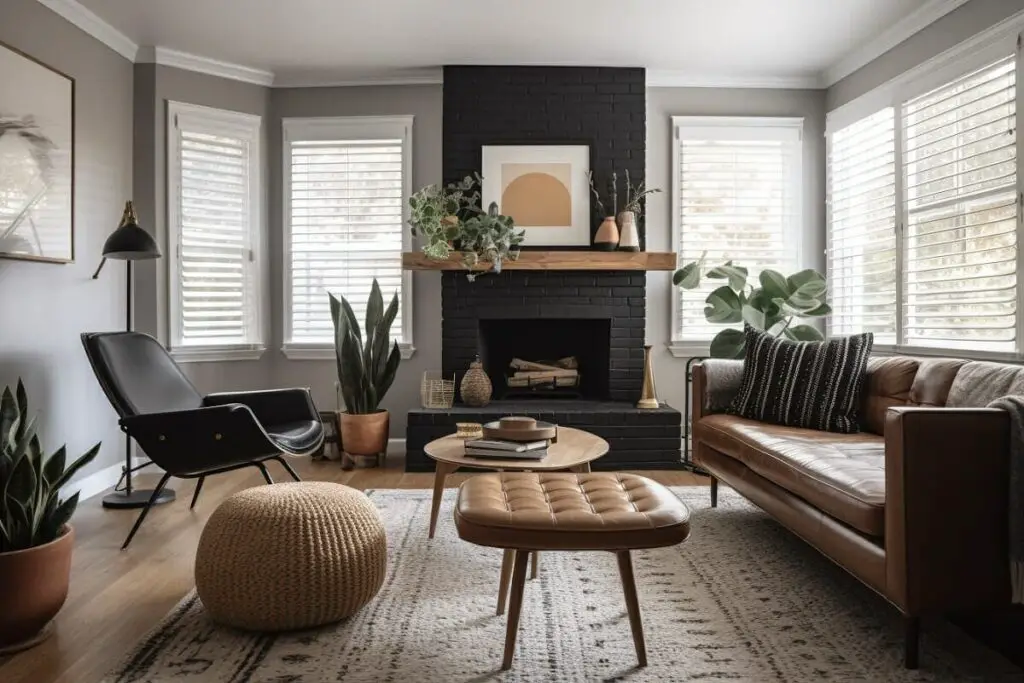Creating a visually appealing living room involves more than just selecting furniture and decor; it requires a thoughtful approach to color coordination. In this guide, we will provide expert advice on how to effectively mix and match two colors in your living room, transforming it into a cohesive and inviting space.
Understanding Color Psychology
Before diving into specific color combinations, it’s essential to grasp the basics of color psychology. Colors evoke emotions and set the mood for your living room. For example, blues are calming and serene, making them ideal for a relaxation-focused room, while reds are energetic and can stimulate conversation.
Choosing Your Base Color
The first step in your color pairing journey is selecting a base color. This color will act as the dominant hue in your living room. Neutral colors like beige, gray, or navy offer flexibility and can be easily paired with a variety of accent colors. Choose a base color that reflects the mood you want to instill in your space.
Selecting a Complementary Accent Color
Once you have your base color, the next step is to choose a complementary accent color. This color will be used in smaller doses to enhance the room’s aesthetic and add vibrancy. For a harmonious look, refer to the color wheel. Colors directly opposite each other on the wheel, such as blue and orange, naturally complement each other and create a dynamic yet balanced environment.
Incorporating Patterns and Textures
Mixing and matching colors is not just about solid blocks of color. Introducing patterns and textures can add depth and interest to your living room. Consider patterned throw pillows, rugs, or curtains that incorporate both your base and accent colors. Textures like velvet for luxury or linen for a light, airy feel can significantly influence the room’s character.
Balancing Color Distribution
The key to successful color mixing is balance. Your base color should cover approximately 60% of the room, including walls and large furniture pieces. The accent color should cover about 30%, appearing in elements like curtains, an accent wall, or upholstery. The remaining 10% can be reserved for tertiary colors or metallic finishes in accessories like lamps, picture frames, or decorative objects.
Lighting and Its Impact on Colors
Lighting plays a pivotal role in how colors are perceived. Natural light showcases colors in their truest form, while artificial lighting can alter their appearance. Test your color choices in different lighting conditions to ensure they work well at all times of the day. Additionally, consider incorporating layered lighting (ambient, task, and accent) to enhance the room’s colors and features.
Seasonal Adaptability
Consider the adaptability of your color scheme with the changing seasons. Accessories like cushions, throws, and floral arrangements in suitable shades can help transition your living room from summer to winter without a complete decor overhaul.
Examples of Color Combinations
- Navy and Mustard: This pairing is both elegant and bold. Navy offers depth and stability, while mustard provides a cheerful burst of energy.
- Gray and Teal: Ideal for a modern and chic look, gray provides a neutral backdrop, allowing the vibrant teal to pop without overwhelming the space.
- Beige and Burgundy: For a warm and inviting atmosphere, beige and burgundy are perfect. This combo works well with rich wood textures and golden accents.
Incorporating Personal Style
While it’s important to follow general guidelines, incorporating your personal style is crucial. Your living room should reflect your personality, whether it’s through bold color splashes, minimalist undertones, or eclectic mixes.
Maintaining Cohesion
To ensure a cohesive look, repeat your chosen colors throughout the space in various elements and textures. This repetition will tie the room together and create a unified look.
Conclusion
Mixing and matching two colors in your living room can be a delightful challenge that, when done correctly, produces a stunning and welcoming space. By understanding color theory, balancing your color choices, and integrating personal touches, you can achieve a beautiful and harmonious living room.


